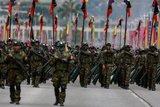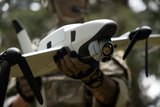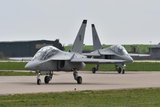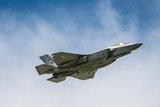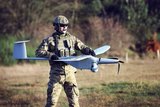Lockheed nets $43 million US Army contract for Black Hawk modernisation
A UH-60 US Army Black Hawk operated from Pennsylvania. (Photo: US Army)
Lockheed Martin has been awarded an initial US$43 million contract from the US Army that will fund the Black Hawk modernisation efforts.
The initial funds will focus on the enhancement of the airframe and the inclusion of a ‘digital backbone’ capability to allow for uncrewed aerial systems (UAS) and launched effects integration.
Hamid Salim, vice-president – Army and Air Force Systems at Sikorsky, said: “Integrating launched effects into the Black Hawk will enhance its capabilities and provide a significant advantage. Modernisation is reducing costs, increasing efficiency and improving the overall maintenance and sustainment for the aircraft.”
Allowing for the integration
Already have an account? Log in
Want to keep reading this article?
More from Air Warfare
-
![Denmark to bolster maritime defences as P-8A FMS deal approved by US]()
Denmark to bolster maritime defences as P-8A FMS deal approved by US
The NATO country continues to focus on building up its maritime surveillance and enforcement capabilities as part of a major investment in its Arctic defences.
-
![Spain moves ahead with transport, intelligence and training aircraft modernisation efforts]()
Spain moves ahead with transport, intelligence and training aircraft modernisation efforts
Confirming its C295 order in late December, the Spanish Ministry of Defence also awarded Airbus with its Hurjet procurement contract and both Airbus and Indra with a contract to investigate a proposed Signals Intelligence aircraft solution by 2028.
-
![December Drone Digest: Germany, Australia and US champion indigenous UAV production]()
December Drone Digest: Germany, Australia and US champion indigenous UAV production
One of the key trends seen in December has been the rise in indigenous investment within the UAV market, particularly across certain countries, with Germany, Australia and the US focusing on their commitments to sovereign development.
-
![What might next-generation military aircrew training look like?]()
What might next-generation military aircrew training look like?
Changing roles for combat aircraft fleets, the rise of simulation and LVC technologies, and the increasing cost of flight hours could all be leading to a paradigm shift in military pilot training.
-
![2025 air market review: European defence independence, next-gen tech and export concerns dominate]()
2025 air market review: European defence independence, next-gen tech and export concerns dominate
This year’s (geo)political turmoil has challenged many long-prevailing assumptions, leading to far-reaching consequences for air forces and their supplier bases in industry worldwide – with five key trends in review for 2025.
-
![Poland air report: Drones, transport aircraft and tankers dominate potential procurement plans]()
Poland air report: Drones, transport aircraft and tankers dominate potential procurement plans
With a rising defence budget and equipment list, Poland’s air market is set to grow as the country continues to modernise its transport and helicopter fleets while seeking out uncrewed aerial vehicles and loitering munitions.








